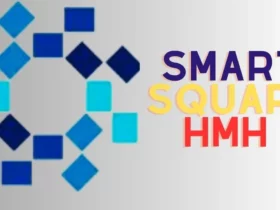The relentless march of technological progress has brought us to the brink of a new era in computing. An era where traditional boundaries are being pushed by the day, and the once-clear lines between different branches of technology are blurring.
In this transformative landscape emerges a concept, a potential game-changer, known as Pi123. This article aims to shed light on what Pi123 represents, its implications for the future of computing, and how it could revolutionize various technology sectors.
Understanding Pi123: The Basics
To understand Pi123, one must step back and consider the evolution of computing paradigms. From the earliest days of simple binary code to the complex algorithms driving artificial intelligence today, each step forward has been marked by a significant breakthrough. Pi123 is a breakthrough that could redefine how we think about computing power, efficiency, and application.
At its core, Pi123 represents a hypothetical advanced computational model. While details about Pi123 remain shrouded in speculation and forward-thinking hypotheses, the concept could radically depart from traditional binary computing, using a ternary system or an entirely new approach to data representation that can exponentially increase computing efficiency.
Innovation and Computational Models
Current computing systems are predominantly binary, built on a foundation of zeros and ones. This two-state system has served us well, but it comes with limitations,
especially as data grows exponentially and demands on processing power skyrocket. The concept of Pi123 suggests a move away from this binary constraint, potentially embracing a multi-state system that could handle vast amounts of data more efficiently.
Pi123 might draw from quantum computing principles, where qubits operate in multiple states simultaneously, unlike binary bits. If Pi123 can incorporate such multidimensional data handling while maintaining the stability and scalability of classical computers, it could herald an unprecedented era of performance and speed in computational tasks.
The Potential Impact of Pi123 on AI and Machine Learning
Artificial Intelligence (AI) and Machine Learning (ML) stand to benefit immensely from the advancements that Pi123 might bring. AI and ML currently require substantial computational resources,
particularly for deep learning algorithms that involve neural network training on large data sets. Pi123’s advanced computational capabilities could reduce the time and energy required for these processes, making AI more accessible and efficient.
Furthermore, Pi123 could enhance the ability of AI systems to perform complex pattern recognition, make predictions, and automate decision-making with a level of precision that is currently unattainable.
As a result, industries reliant on AI and ML, such as healthcare, finance, and autonomous vehicles, could see significant improvements in the reliability and effectiveness of their technologies.

Revolutionizing Data Processing and Storage
One of the most significant hurdles in the advancement of computing technology is the handling and storing of large volumes of data. As we step into the era of Big Data,
the ability to process and store data efficiently becomes critical. Pi123 could introduce new data processing paradigms that are more adept at handling the three Vs of Big Data: Volume, Velocity, and Variety.
If Pi123 can process data in a more sophisticated, multi-state system, the density of information stored in a given space could drastically increase, reducing the physical footprint of data centers and memory devices.
This would not only benefit the environment by conserving space and energy but also make high-performance computing more affordable and widespread.
Enhancing Cybersecurity with Pi123
In the digital age, cybersecurity is a paramount concern. The complexity and sophistication of cyber-attacks are increasing, and current cryptographic methods may eventually become obsolete. Pi123 has the potential to fortify cybersecurity measures by introducing complex algorithms that are tougher to crack with conventional hacking methods.
The development of Pi123 could lead to the creation of new encryption techniques that leverage its advanced computing capabilities to secure data more effectively. With cybersecurity threats posing risks to national security, critical infrastructure, and personal privacy, Pi123’s impact on cybersecurity could be one of its most valuable contributions.
The Future of Computing with Pi123
Pi123 promises a future where computational barriers are a thing of the past, and innovative technology ushers in an age of efficiency, security, and accessibility. The next-generation computing landscape painted by the Pi123 concept could see the rise of smart cities, personalized medicine, real-time global collaboration, and more, all running on the back of this advanced computational framework.
This new paradigm will also call for a shift in the skill sets required by the workforce. As Pi123 becomes integral to computing, professionals must adapt, acquiring new knowledge and skills to harness its full potential. Education systems and professional training programs will prepare the next generation for a world built on Pi123-powered technologies.

Conclusion
While Pi123 remains a conceptual model at the forefront of speculative technology discussions, its potential cannot be ignored. The idea challenges us to think beyond the status quo and imagine what could be possible with a leap in computational power and efficiency.
Whether Pi123 becomes a reality through quantum leaps, ternary computing, or an entirely new computational architecture, its conceptualization pushes the boundaries of current computing. It ignites the imaginations of innovators around the globe.
Also, Read The Following: Ben Greenfield fitness













Leave a Reply